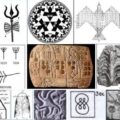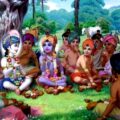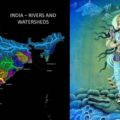Understanding Scientific Culture of Ancient India: Historical Context
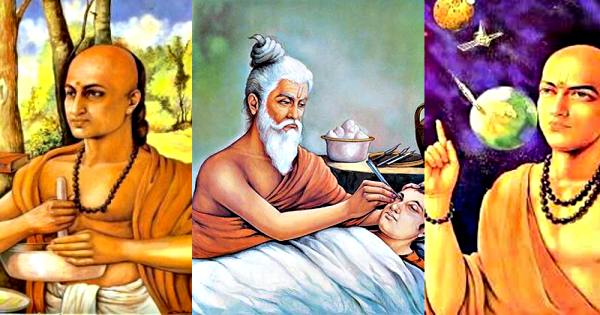
The story of India, the world’s oldest continuing and working civilization is nothing less than an incomparable and unseen phenomenon. A recorded and living civilization as this—that enjoys cultural infiniteness beyond its finite political borders; that permeably assimilates, absorbs and enriches even the minutest diverse thought that it comes in touch with; a historic quest and traditional thirst for knowledge in all spheres as a means of self-enlightenment—is also home to vibrant scientific achievements. The scientific culture of ancient India is rarely discussed today. Questioning and criticizing are the two tools through which the human mind thinks and opens up new avenues of thought in the fields of science, social science, arts, and humanities. Critical knowledge and education are known for expelling superstitions from the human mind. The role played by Indian society in such knowledge-generating activities is immense and crucial as it has also importantly provided a cultural continuity.
The wise men and women of ancient India developed the faculty of speculation, with which they laid the foundations of not only spiritual thought and cosmic religion but also of scientific thinking. The keen and passionate observation of the night sky, heavenly bodies and nature inspired some of the thinkers towards religious passion, weather prediction, navigation and agriculture. The advances achieved in arts and crafts, civil engineering works and drainage systems since the Harappan civilization is something that mesmerizes people to this day. They used copper, bronze, burnt bricks, ceramics and weights as we know today, though the Indus scripts have not been fully deciphered so far. The Vedas too contained numerous references to drugs, diseases and stars.
The Gurukula System of Education
The education system in ancient India was held in the peaceful environs of the forests. There was a greater emphasis on plain living and high thinking, and this formed the foundation of every great student who was predestined to take the future of Indian science to the pinnacle. Such an education system that was far away from urban areas indeed paved the way for the growth of theoretical and natural sciences. It is therefore important to understand the scientific culture of ancient India, especially how science could flourish so overwhelmingly during ancient times.
The development of logic and philosophy of science during the Vedic period was an important aspect of scientific thinking in ancient India. The gurukula system of education also enabled speculative thinking in a student from a young age as they were taught and trained in various subjects and disciplines. This multidisciplinary approach to education since ancient times had indeed prepared the students, thereby opening the prospects of achieving merit in a wide variety of subjects. One also need to understand the role of the peaceful environment in which the gurukula system prevailed. The greats like Kapila, Kanada, Aryabhata, etc., were but products of such conditions, wherein astronomy and geometry took shape and paved the scope for greater development and frontal research for the generations that were to come.
Necessity Paves the Way
We have already pointed out that it was the need of society that drove the scientific journey of India since ancient times. The need for the construction of ritual altars that involved geometric designs for various sacred rituals led to the development of geometry and measurements. Similarly, the requirement for greater understanding of astronomical science was a prerequisite for the monsoon-centric Indian agriculture, as well as religious and auspicious events which were but based on the importance of revering the nature.
This gradual rise in the requirements of society became an important guiding force for the rise of thinkers, philosophers and educators with scientific fervor who formed an important aspect of Vedic society. Therefore, the scientific culture of ancient India found its roots in critical questioning and prospective thinking.
Patronage and Sustained Funding
The support received from the indigenous and native royal charters was also an important aspect of India’s scientific tradition and culture. The kings too studied and were trained in science, arts, religion, philosophy, statecraft and military strategies at gurukulas and therefore understood the importance of imparting education to every generation as a duty and tribute to their guru and kingdom. This was in fact the result of total conviction and understanding of the important role played by scientific education in Vedic society.
The royal patronage and social support that was accorded to the centers of higher learning enabled the imparting of quality education that disseminated holistic knowledge to its pupils and enabled them to serve society and achieve uninterrupted intellectual progress. Such an education system therefore attracted students from other countries, who were also trained in various aspects of knowledge, leading to greater diplomatic and cultural relations between India and other nations.
Trade and Development: A Cause for Global Knowledge Dissemination
The Mauryan period saw the transformative shift from a rural– agrarian economy to that of an urban economy which laid greater emphasis on trade and related activities. This led to the evolving of trading communities, merchant guilds and craftsmen who played an important role in trade and economic activities, thereby making wealth play a prominent role in society and inspiring several merchant guilds to play an active role in sponsoring educational and scientific activities that ultimately led to knowledge creation. A steady intellectual vibrancy was suitably seen as a prerequisite for scientific progress and technological improvements as it enabled the production of diversified goods and profit for the traders. As a result, there was a naturally sustained and steady growth of technological specialization and general scientific interest that resulted in new techniques and knowledge in science and technology and greater wealth generation in the society.
Such a tradition of sponsoring educational and scientific interest continued, and enabled India to achieve the pinnacle of glory during the Gupta period, which is called the Golden Age. As trade grew beyond borders, the need for greater and more efficient trade practices were supported by scientific knowledge in the areas of transportation, which were aided by navigation and astronomical understandings that played a crucial role in maritime trade as astronomical readings also acted as a uniform calendar. The traditional Indian calendar, which is based on astronomical readings, suited the Indian agricultural pattern as it correctly predicted the arrival of the monsoon, and this was household knowledge in those times. Varahamihira, the renowned astronomer, had emphasized the importance of mastering the understanding of the laws of nature that governed the atmosphere which caused monsoon and rainfall as society was sustained considerably through agriculture and the production of crops.
The interest of traders in scientific culture of ancient India consolidated to the extent where direct patronization became a part of the trade culture as the outcomes had yielded considerable success in increasing the profits of the trade guilds from their overseas trade. The establishment of direct commercial relations with the West through the Persian Gulf and Red Sea enabled Indian traders to reach far and wide with their products. Considerable achievements in maritime trade and shipping practices enabled India to have an established shipping industry and have maritime relations with far-off countries. India also could establish embassies in foreign kingdoms and in the Roman Empire.
Trade prospects and maritime relations with other empires enabled cultural exchange and knowledge flow from India to other regions and empires. The reverence and importance given to scholars of science, like Aryabhata and Varahamihira, enabled them to explore and expand their respective expertise of science to its logical completeness. The scientists and scholars of those days were well aware of and connected with the contemporary happenings of scientific developments. Therefore, Indian scholars and scientists churned out correct and exact knowledge. There are various reports by foreign travellers who spent considerable time in India during the fourth and fifth centuries AD that reveal the considerable patronage afforded to education and centres of learning and about the visible intellectual impact of a society that had scientific thinking as its norm in day-to-day affairs. Such collective remarks by travellers and scholars from emissaries of other kingdoms and empires provide crucial testimony about the scientific thinking and practices that existed in ancient India.
Public Ownership of Knowledge Systems
India’s religious and spiritual lessons since ancient times have imparted one important work philosophy, which is to work selflessly without dwelling or expecting fruitful returns for the work that is being done. This Indian philosophy of work has, for centuries, been a part of India’s work culture, which has also proven to be a spiritual path, i.e., devotion towards work in a selfless manner as a path of enlightenment. Such a notion of work was an integral part of practices by Vedic scholars as well as for educational and scientific enterprises. This is amply proven by the collective authorship of several of scientific and philosophical works such as the Vedas and Upanishads, where, most often, there is no specific author. This is the result of the principle of selfless work as an objective by default.
Max Mueller too has written about the poets, philosophers and scientists of India, where even from the actual works by them not much is known about their whereabouts or any information pertaining to their personal lives. Therefore, in many a case, the learner is required to assume the circumstances that led to such works based on the commentary works of later scholars. Indeed, such a heritage and culture of selfless work in a larger context of the Vedic civilization has brought in challenges to chart a confirmed chronology of events.
Ref:
Sabareesh, P. A. (2022). A Brief History of Science in India, Garuda Prakashan Pvt. Ltd.
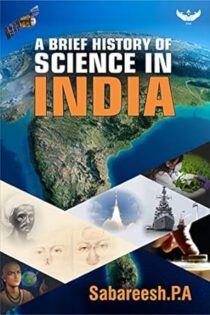
Featured image courtesy: MOVE.

